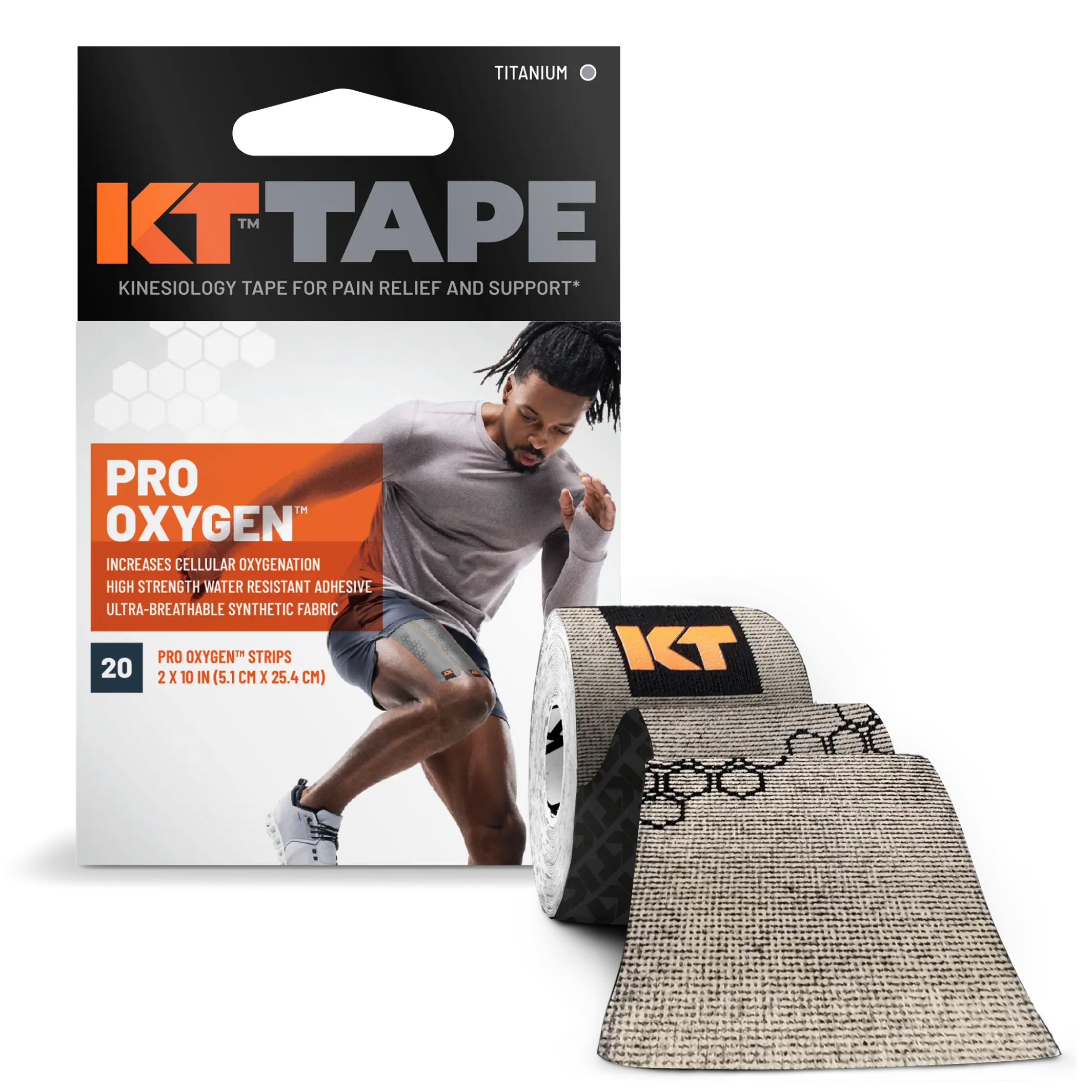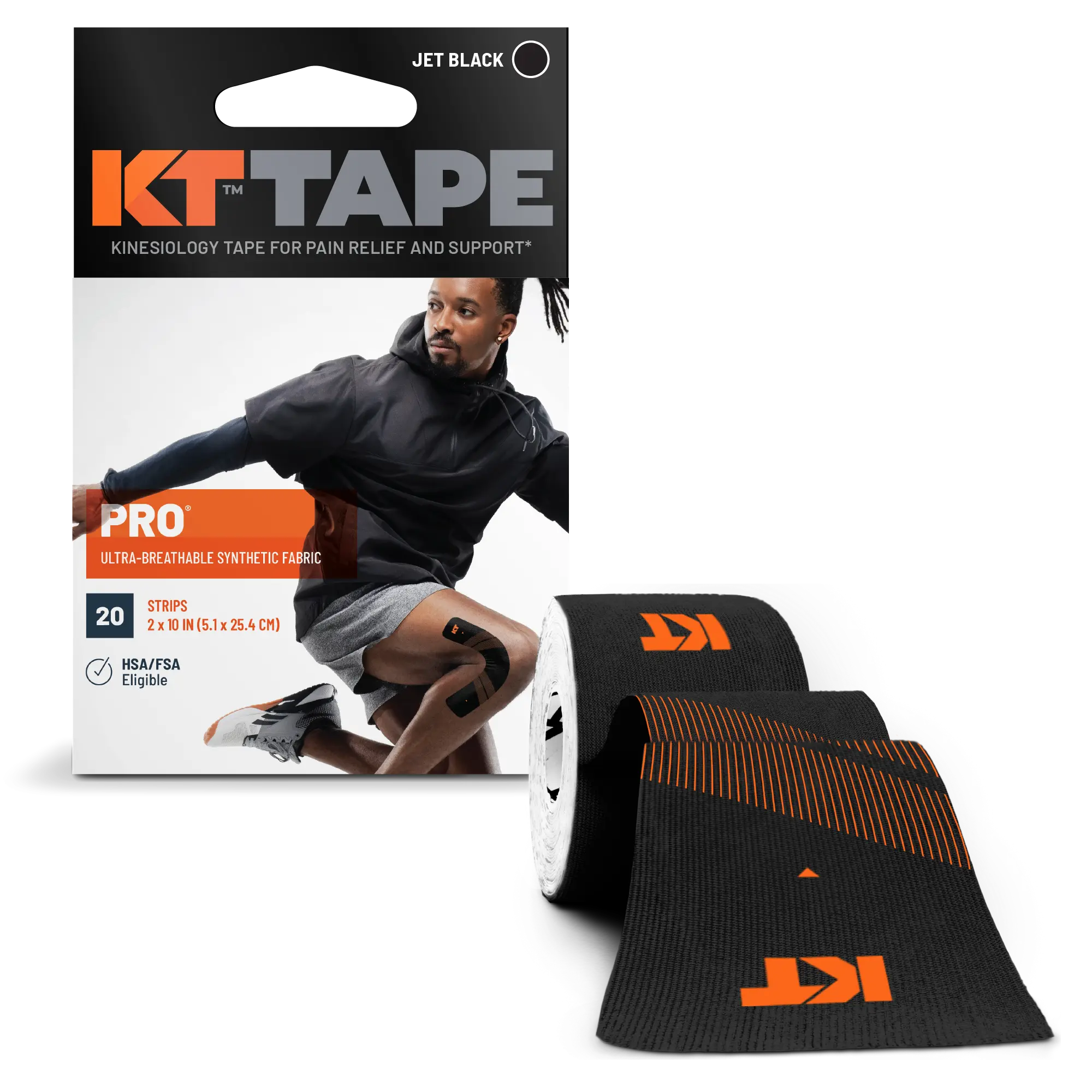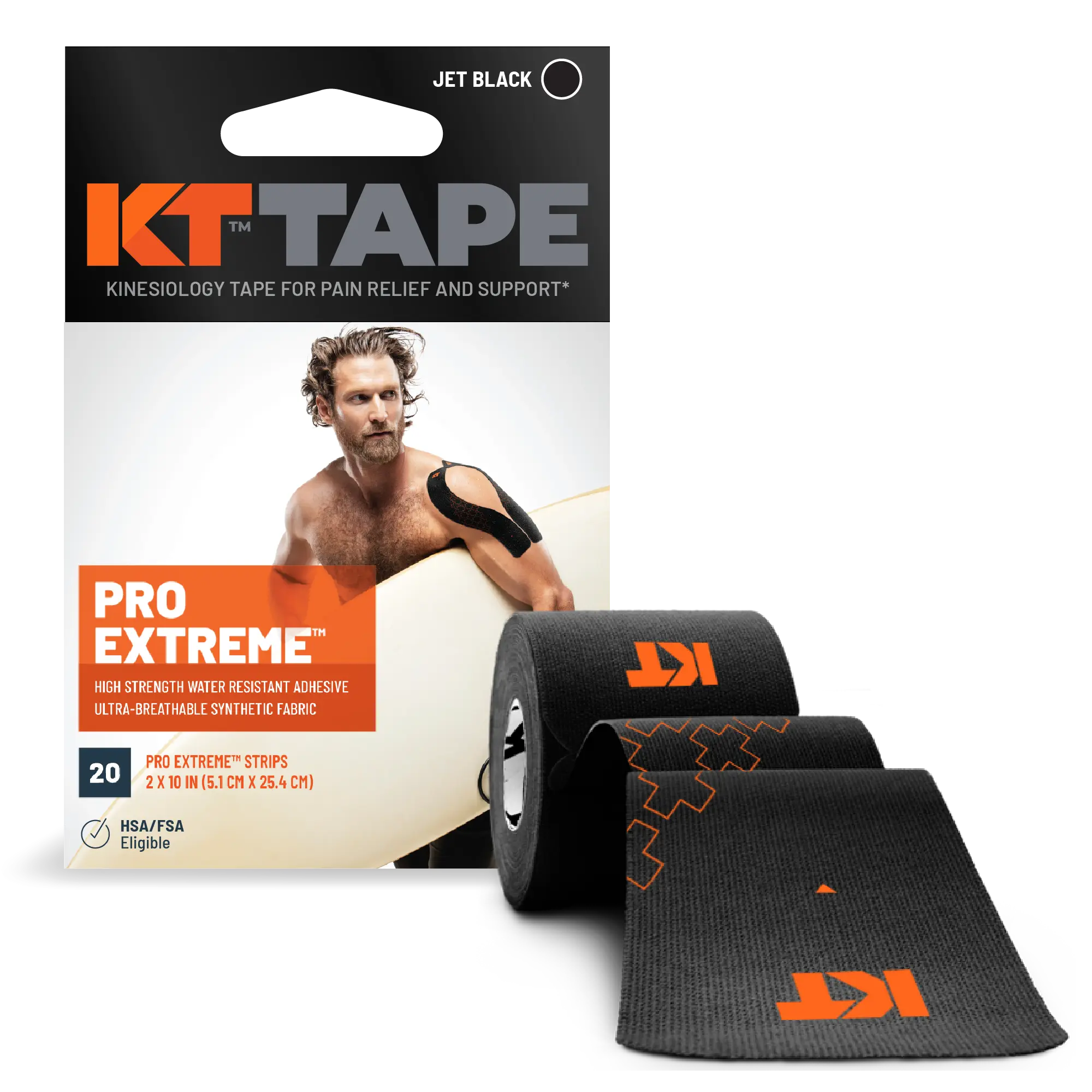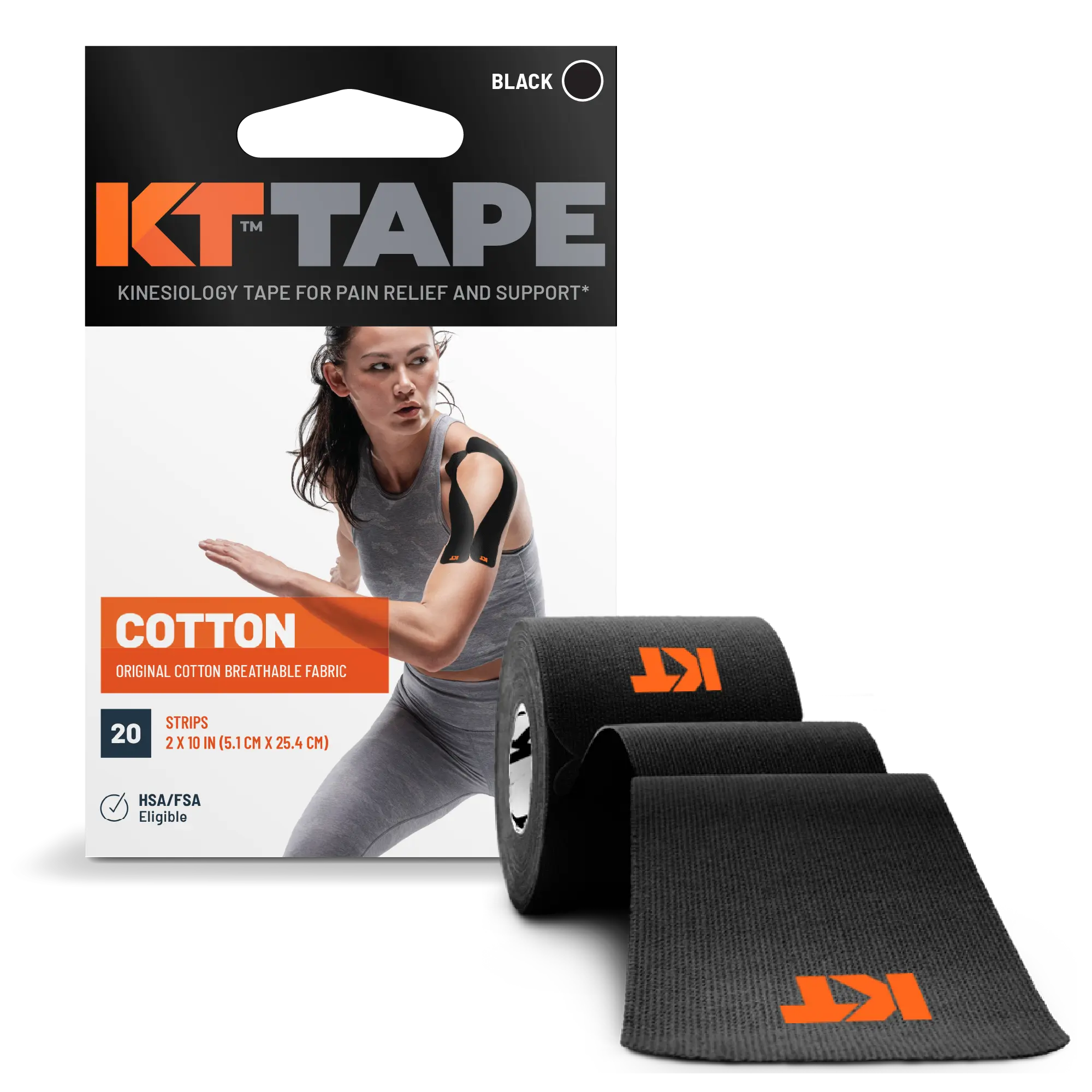Sports and other activities can be great for staying healthy, but it can also come at a cost. Overuse of our joints, muscles, and ligaments can lead to irritation. One common issue for athletes and non-athletes alike is knee pain. Knee pain – more specifically jumper's knee or Patellar Tendonitis – can affect even simple tasks like walking, making it difficult to manage onset of pain and irritation. Patellar Tendonitis kinesiology tape may help to address symptoms of distress within the knee.
Sports, especially those involving jumping and stop-and-go movements can put heavy strain on the patella. A stabbing pain can occur with overuse. Kinesiology taping for patellar injury can be suitable for relieving inflammation and addressing pain. KT Tape offers the chance to diminish swelling so that you can return to your normal tasks.
KT Tape offers a full line of products that are specifically designed and made to address problem areas of the knee. With advanced kinesiology tape, athletes and everyday wearers can find the types of products that work well for stability and support that address pain and swelling. See our full line of KT Tape Knee Pain products here.
Below is a detailed breakdown of knee taping, including the kinds of knee injuries it can help treat.
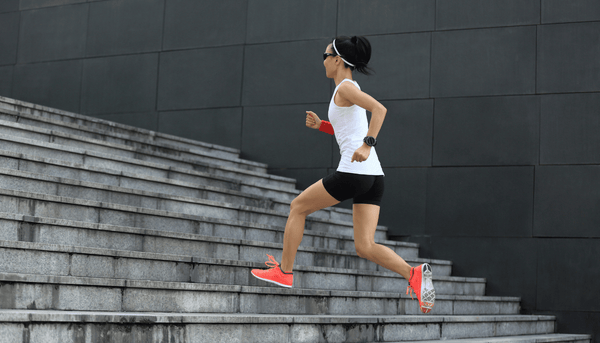
Understanding How Kinesiology Tape Works
Kinesiology tape (or simply “kinesio tape”) is a type of highly flexible adhesive tape that helps provide stability to the treatment area. The material gently contracts, lifting the skin so that a microscopic, otherwise indistinguishable gap forms between your skin and the tissues underneath. Such an opening allows an increase in circulation, which is essential for managing swelling so that the injury has an easier time healing and can see reduced pain.
One of the primary benefits of the tape is that it doesn’t restrict your movements in the way that standard athletic tape does, so you can go about your daily life or participate in your favorite sports knowing that your knee is still supported. Kinesio tape from KT is also water resistant, so you can wear it for days at a time and even as you exercise or shower.
Kinesiology Tape for Common Knee Injuries
Knee taping helps with a variety of knee concerns, including the following:
Taping for Anterior Cruciate Ligament Injuries
Anterior cruciate ligament (ACL) injuries are common for those who play sports that require cutting and pivoting, like soccer, basketball, and football. Landing from a jump incorrectly or changing directions too quickly can cause your ACL to tear.
KT Tape is excellent for treating these injuries because it makes it easier for you to focus on how your body moves. When you wear kinesio tape, you retain the flexibility you need, but you are more conscious of when you move in such a way that is not normal or comfortable for the knee, thus supporting correct movement as your rehab your ACL, which can also help keep you from re-injuring the ACL during activity.
The tape also offers support so that the joints in the knee do not receive all of the pressure and stress. Instead, the surrounding muscles are encouraged to do more of the work.
Taping for Meniscal Tears
Your menisci are two pads of shock-absorbing cartilage in your knee. Injuries to these parts of the knee are common in people who play sports that require pivoting to catch a ball, but they are also a concern for non-athletes as they get older. If you move when your foot stays planted on the ground and your knee turns, you put your menisci at risk.
KT Tape helps address these issues by making you aware of how your knee moves, and if you’ve already suffered a meniscal tear, the way the tape creates that small pocket under your skin helps bring nutrients and oxygen to the area while flushing out waste that inflammation causes, helping you feel better faster and diminishes knee pain.
Taping for Posterior Cruciate Ligament Injury
A posterior cruciate ligament (PCL) injury is often sustained as a result of an overextension of the knee, a common occurrence in the kinds of sports that put players at risk of landing awkwardly. It can also occur if you receive a direct blow to your flexed knee, like when you land hard on a bent knee.
Knee instability is a serious concern with PCL injuries, so KT Tape is a good choice. It offers the support your knee requires so that you don’t keep hurting it each time you take a step. It can also prevent the knee from feeling like it’s about to give, which can lead you to compensate with other muscles, potentially injuring them as well.
Taping for Knee Tendonitis
Stress to the tendon often occurs as a result of sports activities like basketball, but if you don’t have a lot of muscle flexibility in the area, it can be a concern.
When you overuse your knee joint, you can develop a condition called patellar tendonitis, also called jumper’s knee, which seriously affects your range of motion with pain that increases significantly when you try to squat or even walk downstairs. Stiffness can also be a concern because of the significant swelling that might occur.
Patellar tendonitis kinesio tape also offers the chance to avoid making an injury worse. Taping for knee tendonitis makes you aware of each move you make with your knee so that you don’t put your tendon at risk.
When your knee is not functioning at its best, you may compensate with muscles and other joints, which can lead to further injuries. A major benefit of kinesiology tape for the knee is its flexibility in terms of application. It can be used in a variety of ways to create support and in different areas of the knee.
Visit our Knee section for more information on using KT Tape for Knee Injury or general support.
Managing Knee Pain
If you want to manage the kind of knee pain that may be preventing you from enjoying your daily life or from participating in your favorite sports, choosing a non-invasive option like kinesiology tape is a good choice.
At KT Tape, we offer some of the most reliable products you can turn to for dealing with joint pain in your knee or anywhere else in your body. With options like KT Tape Pro, Pro Oxygen, and Pro Extreme, you can find the tape type that offers the level of support you need. You don’t have to turn to invasive options to get relief from pain, swelling, or a reduction in motion when KT Tape is available.
Benefits of Taping Knee for Pain
Here are a few reasons why using tape to help manage your patellar tendonitis pain could be well worth it:
Relief for Other Parts of Your Body
The knees are responsible for a lot when your body’s in motion. If they are injured, other muscle groups, like your lower back or upper legs, will have to pick up the slack which can cause a chain reaction of stiffness and pain across multiple areas of your body. As such, patellar tendonitis taping can help alleviate knee pain while also working to soothe or reduce pain elsewhere.
Reduce Chances of Incurring Other Knee Injuries
Knee pain and knee injuries are just one of the many problems that individuals face. Whether you're routine active or just managing an older injury, finding effective solutions can feel daunting. KT Tape is designed to address many of the issues surrounding knee pain, swelling and overall performance. Find more of our knee products for pain here.
Decrease Knee Pain During Activity
Most people experiencing knee pain fight it while exercising or training, but it’s essential to find ways to keep your pain to a minimum without sacrificing your range of motion. If you have pain in your patellar tendon, KT tape is more than effective. In fact, many athletes swear by it to reduce swelling while training.

Types of Knee Taping Techniques
Using kinesiology tape for the knee is an excellent choice, as it is very durable and flexible. The knee needs that kind of flexibility and breathability if you plan to be up and moving it around, so if you’re having trouble with your patellar tendon, KT tape is a prime pick to stay mobile.
You could also use athletic tape, which is slightly more rigid and offers less flexibility, but it provides the bonus of added support.
How to Apply Kinesiology Tape for the Knee
With a better background on what tape to use and how it works in mind, here’s how you’ll want to apply kinesio tape for the knee:
- STRIP ONE: Tear backing paper two inches from end to create starting anchor.
- STRIPS TWO & THREE: Tear backing paper two inches from end to create starting anchor.
ALL COLORS of KT Tape® are designed to perform equally
BEFORE YOU START:
- APPLY BEFORE ACTIVITY Apply one hour before beginning activity
- CLEAN SKIN Clean dirt, oils and lotions from area with rubbing alcohol
- ACTIVATE ADHESIVE After application rub tape vigorously to activate adhesive
For full Plantar Fasciitis instruction guide, view PDF here.
You can shower or swim with your tape on, but you’ll want to apply it to completely dry, clean skin.
The Patellar Tendon, KT Tape, and Your Recovery
Applying kinesiology tape for the knee can significantly improve the motion and comfort of those with painful knee conditions. It’s instrumental in reducing pain and swelling for many.
It’s important to note that some knee problems resemble other medical problems and conditions, so including other methods in recovery regimens is a vital step for most people with chronic pain conditions of the knee. KT tape may be one of many actions your doctor suggests, so discuss using KT tape with your healthcare provider to ensure you get the best possible treatment
*Not clinically proven for all injuries.

This all results in an application that creates great stability for the entire knee complex. For further questions and information, visit the KT Tape facebook page.




